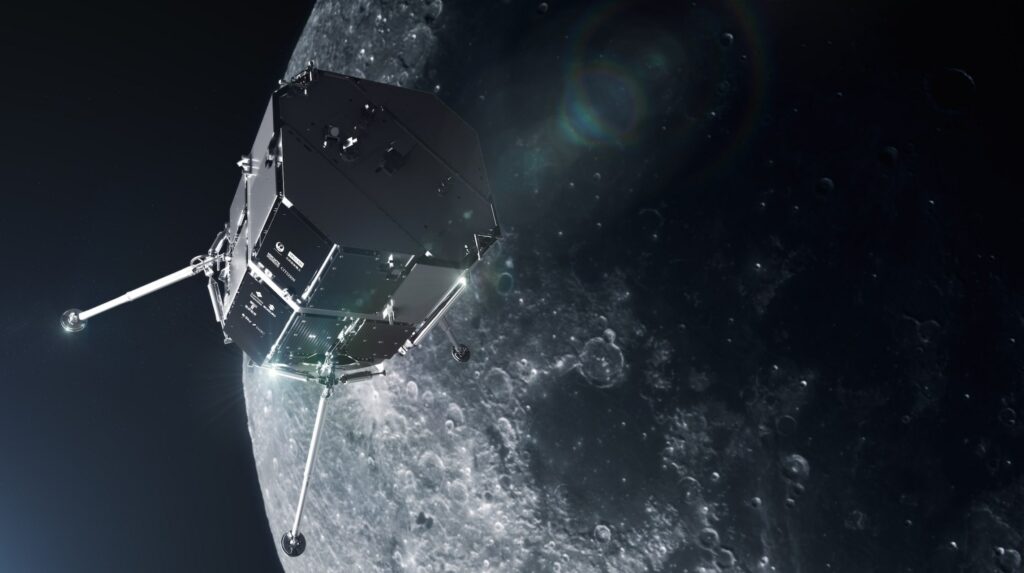The HAKUTO-R spacecraft successfully entered lunar orbit. This is stated in the message of the private Japanese company iSpace. The spacecraft will attempt a soft landing at the end of April.

HAKUTO-R was launched on December 11, 2022. The spacecraft has a height of 2.3 m, a width of 2.6 m and a dry weight of 340 kg (1000 kg including fuel). Its payload consists of a number of scientific instruments provided by both private and public customers, as well as the Rashid, the first ever Arab rover. The 10-kilogram spacecraft was built by the Mohammed Bin Rashid Space Center (UAE). The rover’s scientific equipment includes two high-resolution cameras, a microscope, a thermal imager and a Langmuir probe.
Due to fuel restrictions, the HAKUTO-R was not launched directly to the moon, but was put on a low-energy transition trajectory. Initially, the spacecraft moved away from the Earth by 1.4 million km, and then began to approach it again. On March 20, HAKUTO-R performed the maneuver necessary for the lunar gravity to “pick up” it and put it into a permanent orbit. It ended with success.
The next step should be a soft landing. According to iSpace statements, it will take place at the end of April. The spacecraft will try to land near the Atlas crater, an 87-kilometer impact formation located in the northern part of the visible side of the moon of our planet. If successful, iSpace will become the first private company to successfully land its spacecraft on the Moon.
It should be added that the Japanese company is already developing its second lunar mission. At the moment, it is planned for 2024, it will involve a similar lander. iSpace specialists are also working together with Draper to create a larger lander capable of delivering a large payload to the lunar surface. It is planned to be launched as part of the third iSpace mission.
According to https://spacenews.com
Follow us on Twitter to get the most interesting space news in time
https://twitter.com/ust_magazine

